The Top 17 Environmentally Friendly Green Buildings in Texas

Images courtesy of Hearst Newspapers, LLC, Wikipedia (image by Mikerussell – Own work, CC BY-SA 4.0, Link), 816 Congress, and Robert A.M. Stern Architects .
In a world increasingly conscious of our environmental footprint, the importance of sustainable architecture cannot be overstated. Texas, a state known for its big skies and even bigger ambitions, is playing a pioneering role in this movement.
This article unveils 17 remarkable green buildings in Texas, each a testament to innovative design and sustainable practices. If you’re intrigued by the intersection of architecture and sustainability, this list is for you.
Let’s explore together how these buildings shape a greener future for the Lone Star State and inspire you to take steps toward sustainability in your spaces.
Best Environmentally Friendly Green Buildings in Texas
The following is a compiled list of the 17 best sustainable buildings in Texas:
- USAA
- Austin Public Library
- 816 Congress
- George W. Bush Presidential Center
- LORD Green Real Estate Strategies
- The Clayton Library
- HHS Holcombe Laboratory
- Fire Station 37
- Kendall Library & Community Center
- Colonnade
- Hess Tower
- 717 Texas
- BP’s Helios Plaza
- AlliantGroup
- NASA Building 20
- Briarpark Green
- Trammell Crow Center
1. USAA
Building Type: Corporate Headquarters
Location: San Antonio, Texas
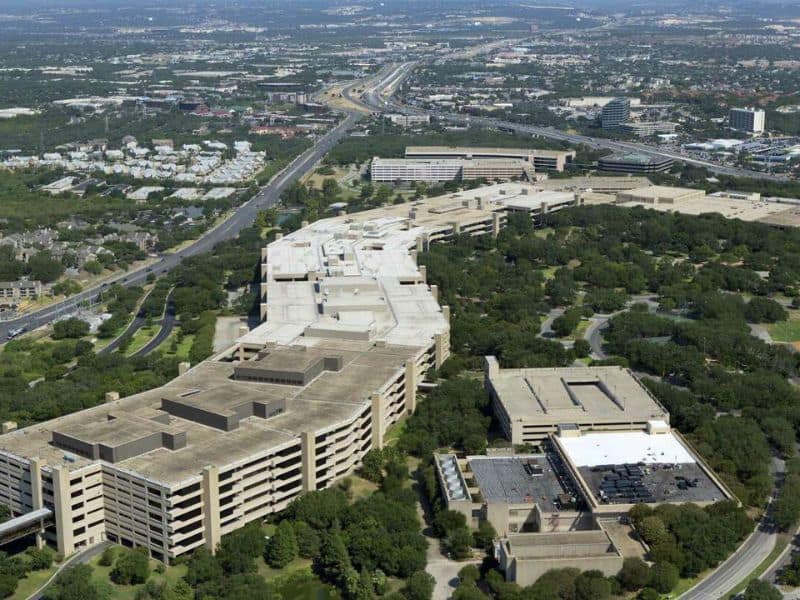
The USAA corporate headquarters in San Antonio is a green titan in Texas’ architectural landscape. It showcases a remarkable commitment to sustainability.
Its innovative water conservation strategies form a cornerstone of its design. They allow the facility to save over 130 million gallons of water annually. Design elements, such as recycling water for landscaping and energy-efficient cooling towers, contribute significantly to these savings.
Furthermore, the building’s recognition by the U.S. Environmental Protection Agency with the prestigious ENERGY STAR certification attests to its status as a leader in sustainable design. This structure serves as a model for eco-friendly corporate headquarters.
2. Austin Public Library
Building Type: Library
Location: Austin, Texas
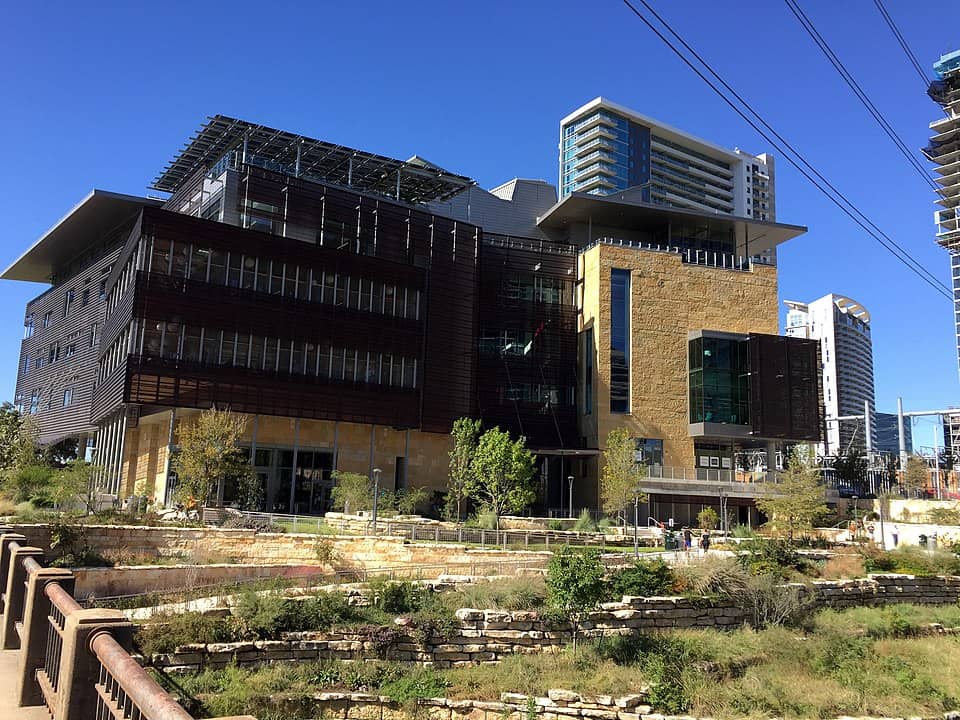
The Austin Public Library is a vibrant community hub in downtown Austin. It embodies sustainable architecture through thoughtful design and operation. The library holds the prestigious LEED Platinum Certification, a first for a U.S. library. The site was a redeveloped brownfield, requiring meticulous excavation and proper disposal of contaminated soil and debris.
- Its layout maximizes natural daylight, reducing the need for artificial lighting.
- The library also has an expansive rainwater collection system. This provides approximately 813,500 gallons of water annually, reducing reliance on potable water.
- The library incorporates energy-efficient measures like on-site solar panels and natural gas utilization.
- It also participates in Austin Energy’s GreenChoice program for wind power.
- The library uses demand-controlled ventilation, under-floor air delivery, and daylight harvesting to minimize greenhouse gas emissions.
- It also achieves an impressive 93% waste diversion on-site and significantly reduces indoor potable water usage.
3. 816 Congress
Building Type: Commercial Real Estate
Location: Austin, Texas
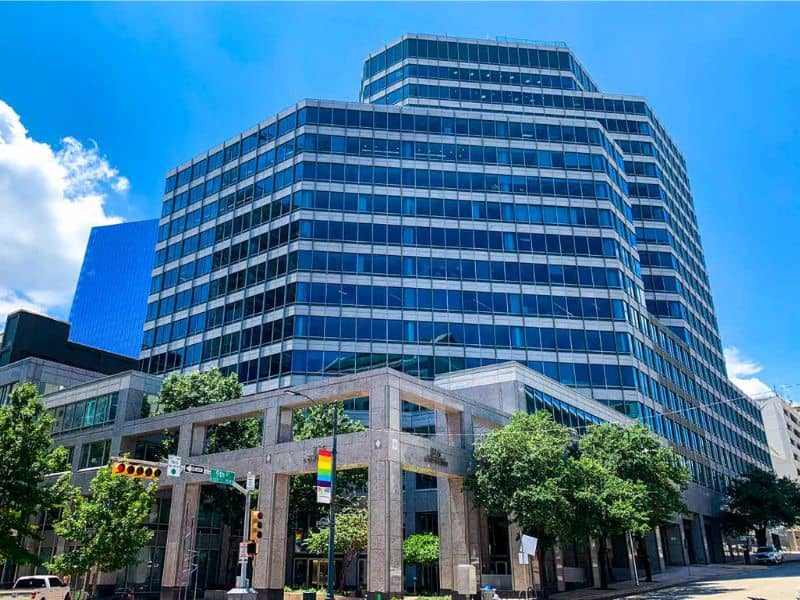
The 816 Congress in Austin, Texas, is a prime example of sustainable building design. It combines functionality and ecological responsibility.
The once-overlooked rooftop spaces have been transformed into lush retreats and offer breathtaking views of the Texas State capital. These modern terraces span around 20,000 square feet and serve as a haven for tenants and a lucrative event space.
The building’s commitment to sustainability is evident in its ingenious water conservation mechanism.
- It repurposes approximately 182,000 gallons of water annually using the air cooling system’s condensate for irrigation.
- The lighting system has also been redesigned to be more energy-conscious. Inefficient floodlights have been phased out for a more efficient alternative.
- Even the rooftop pavers have been reconditioned and reused to reduce waste.
This building thus sets a new standard for green roof performance and showcases sustainability in urban design.
4. George W. Bush Presidential Center
Building Type: Presidential Library
Location: Dallas, Texas
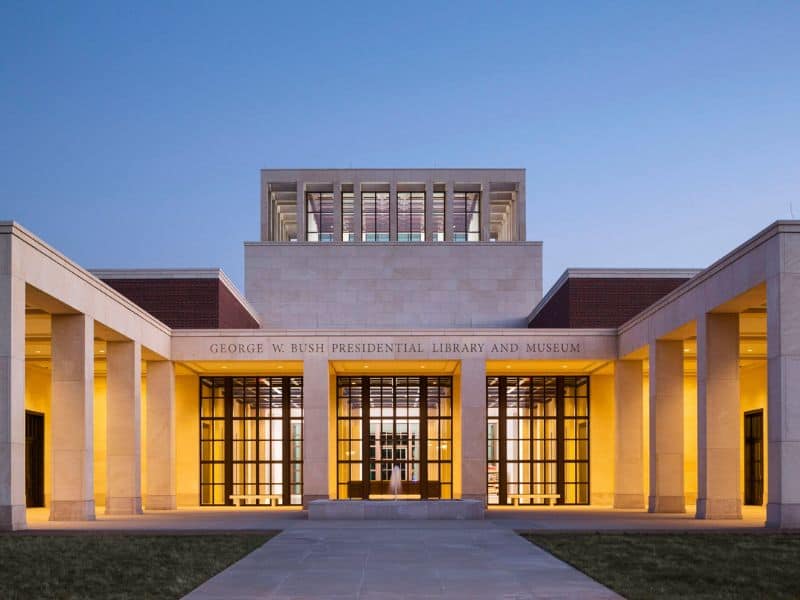
The George W. Bush Presidential Center is an architectural masterpiece by Robert A.M. Stern. Completed in 2013 at a cost of $250 million, the center achieved LEED Platinum certification.
The Presidential Center demonstrates leadership in energy and environmental design.
Noteworthy features of the center include:
- The strategic use of excavation fill and a dynamic vegetative bioswale for stormwater management.
- The center has over 90 native Texan plant species, 900 trees, and over 350,000 plant plugs.
- With a biomass density index surpassing a typical lawn, it’s evident that this center goes above and beyond what is required of a structure.
- Not only does it incorporate green roofing systems, solar panels, and locally sourced materials, but it also takes significant steps to reduce its ecological footprint.
- Recycling rainwater to meet 50% of its irrigation needs conserves water resources.
5. LORD Green Real Estate Strategies
Building Type: Private Office
Location: Dallas, Texas
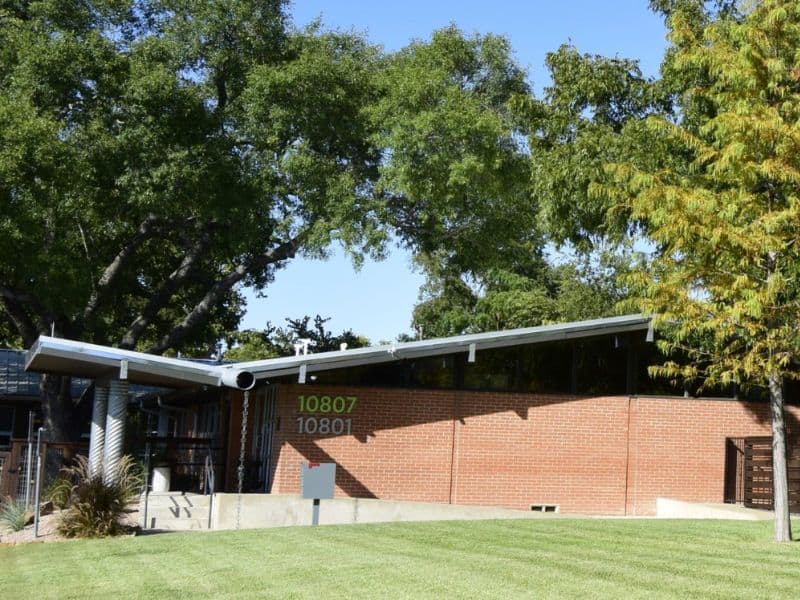
The headquarters of LORD Green Real Estate Strategies in Dallas, Texas, is another addition to our list. This 6,663-square-foot office, dating back to 1959, combines modernity and sustainability through strategic upgrades.
Under the ownership of LORD Green Strategies since 2017, the building has seen many environmental innovations. Examples include a weather-based irrigation controller and retrofitting of the LED system.
The eco-friendly approach extends to water conservation with efficient plumbing fixtures and a smart irrigation controller. The location near public transportation, native plants for landscaping, and a dog park with turfgrass contribute to its sustainable ethos.
The building’s LEED Platinum certification, BREEAM USA-In Use recognition, and Energy Star labels are testaments to its environmental stewardship commitment.
6. The Clayton Library
Building Type: Library
Location: Houston, Texas
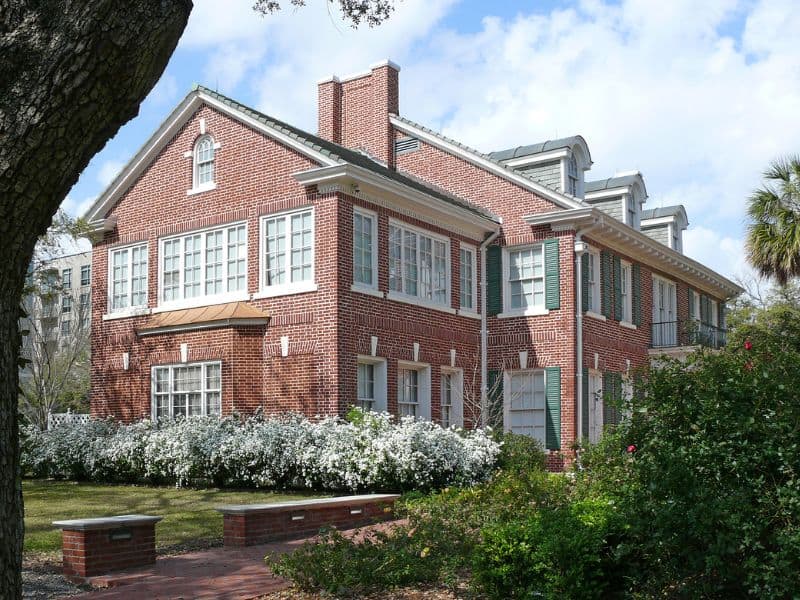
The Clayton Library in Houston, Texas, is a shining example of environmental responsibility in architectural design. It has a LEED-NC Silver certification, thus showcasing sustainability and function.
Some features of the building are:
- The building emphasizes water efficiency with high-efficiency irrigation systems and low-flow fixtures, reducing water consumption significantly.
- The library also prioritizes resource efficiency, reusing over 90% of building materials and recycling over half of construction waste.
This sustainable building design is a testament to the City of Houston’s commitment to eco-friendly practices.
7. HHS Holcombe Laboratory
Building Type: Laboratory
Location: Houston, Texas
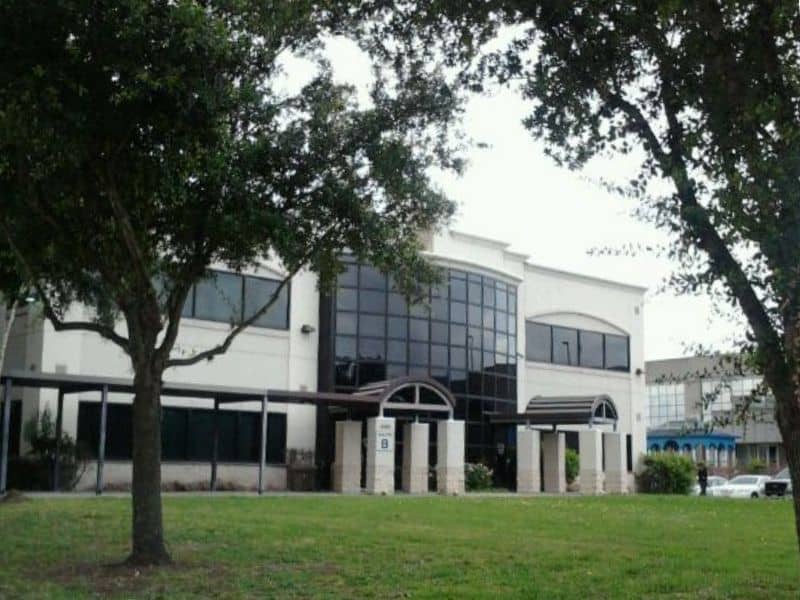
The HHS Holcombe Laboratory in Houston, Texas, exemplifies sustainable architecture with its efficient lab design. Making the most of its densely urban location, the laboratory has employed strategic green building practices to achieve a LEED-CI rating.
A significant aspect of its conservation initiative includes energy-efficient retrofits and innovative lighting controls underpinned by occupancy sensors. The lab has also adopted a strategy of reducing overhead lighting by introducing LED task lighting at workspaces. This helps them to leverage natural daylight and promote an interactive work environment.
The laboratory goes further in its sustainability commitment by prioritizing local, low-emitting, and recycled materials in its selections. Importantly, stringent standards were followed in selecting finishes, mandating low or no VOC content to ensure improved indoor air quality.
8. Fire Station 37
Building Type: Fire Station
Location: Houston, Texas
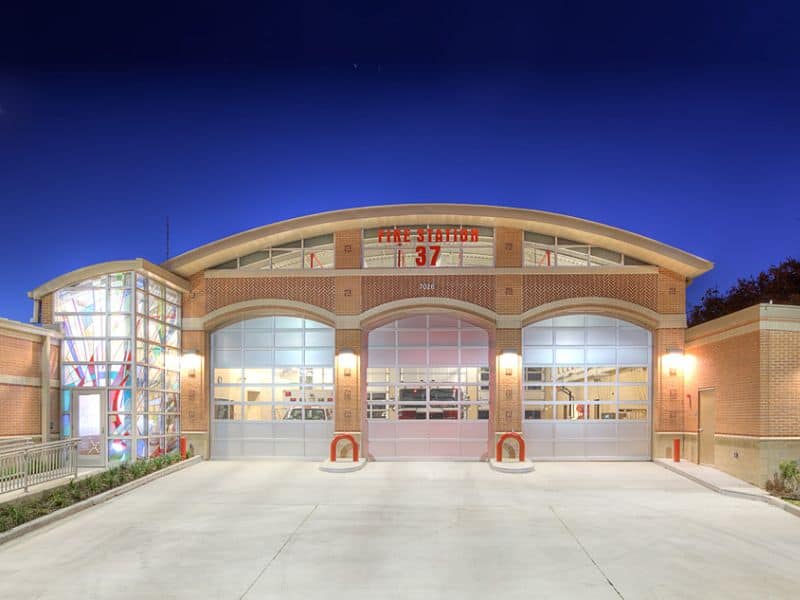
Fire Station 37 in Houston, Texas, is a prime example of sustainable design in municipal buildings.
- The station incorporates a clever water conservation strategy. Rain tanks are installed beneath the parking area to filter and collect stormwater.
- This collected water is used for sewage conveyance, effectively managing stormwater runoff.
- Native plants and a micro-drip irrigation system are utilized.
- The building also reduces its environmental impact through water-conserving fixtures. These include low-flow shower heads and waterless urinals, resulting in a 30% decrease in indoor potable water usage.
- Materials used in construction are carefully chosen to minimize environmental harm. Locally sourced items are prioritized. The project also excels in waste management. Nearly 100% of construction debris is recycled.
This thoughtful and strategic approach underscores Fire Station 37’s commitment to environmental responsibility.
9. Kendall Library & Community Center
Building Type: Library
Location: Houston, Texas

The Kendall Library & Community Center is another structure with a low eco-impact.
- It achieves this through innovative bioswales. These bioswales filter rainwater and create a natural habitat.
- The library also demonstrates its dedication to water conservation with efficient plumbing fixtures.
- Energy consumption is minimized with elevators that use 70% less energy.
- The low slope cool roof reduces solar heat gain. Natural light is maximized, reducing the need for artificial lighting.
- Low-E window glazing improves thermal efficiency and reduces UV-ray transmittance.
- Sustainable materials, some with 100% post-consumer recycled content, further enhance the center’s environmental commitment.
This provides a tangible example of the positive impacts of sustainable architecture.
10. Colonnade
Building Type: Corporate Structure
Location: Addison, Texas
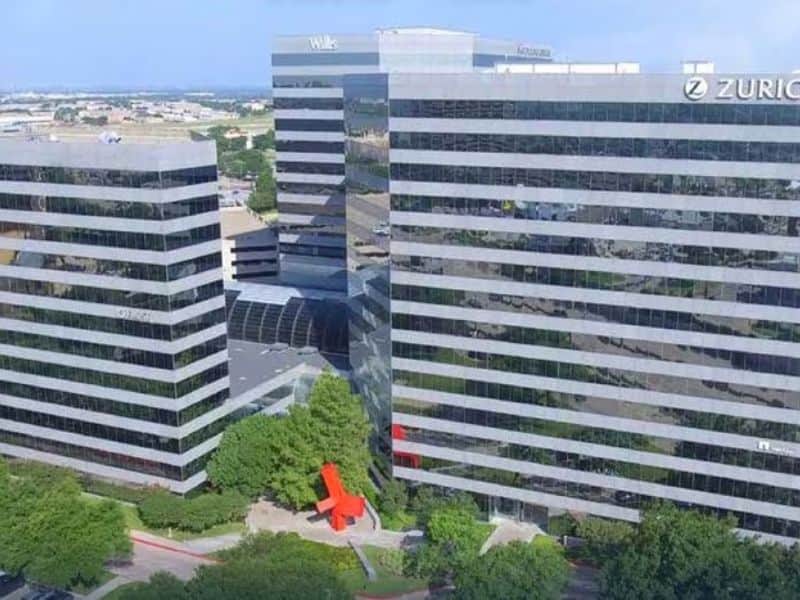
Colonnade, located at Dallas Parkway in Addison, Texas, is a prime example of sustainable architecture for office buildings. It consists of three towers connected by a three-story, climate-controlled vaulted glass atrium. It recently achieved LEED Gold recertification, showcasing its commitment to sustainability.
The building’s atrium not only provides a visually appealing workspace but also plays a crucial role in its energy strategy with landscaping and water features.
Renovations exceeding $32 million have further improved its efficiency. With tenants like Google and Zurich American Insurance, The Colonnade contributes significantly to Dallas’s architectural landscape and serves as an environmental steward in the corporate world.
11. Hess Tower
Building Type: Corporate Structure
Location: Houston, Texas
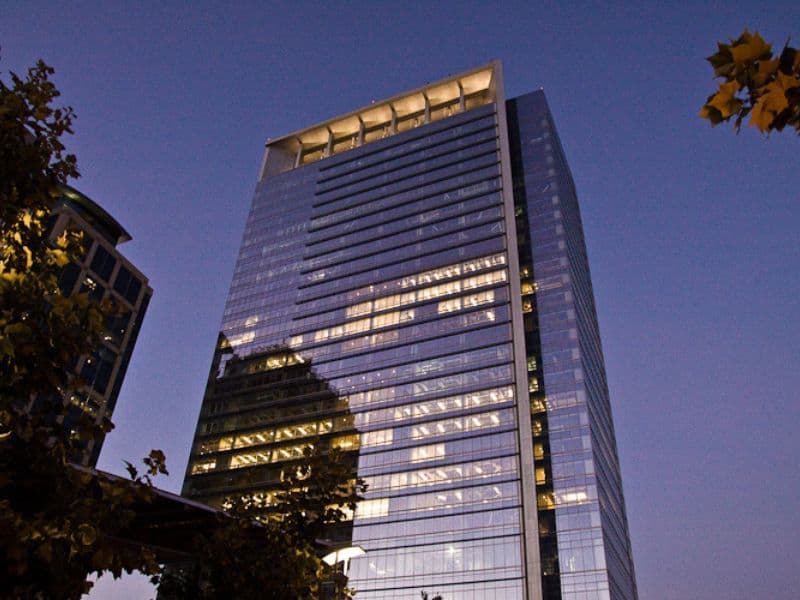
Hess Tower in Houston, Texas, is a shining example of sustainable architectural design. It has a LEED Platinum status and sets high standards with its high-performance glazing.
The tower features an innovative glass and metal façade, a product of Quality Metalcrafts and Linetec, ensuring optimal energy efficiency. The curtainwall system effectively filters out harmful ultraviolet rays while allowing ample daylight to flood the interior. This creates a remarkably eco-friendly building.
Maintaining the longevity of the sustainable exterior features was challenging. However, the chosen coatings meet the rigorous specifications set by the American Architectural Manufacturers Association. This reduces maintenance requirements and saves time, costs, and materials.
12. 717 Texas
Building Type: Coworking Space
Location: Houston, Texas

Located in Houston, Texas, 717 Texas is a leading example of sustainable architecture. This iconic corporate structure showcases a strong dedication to energy efficiency and environmental stewardship. The 717 became the first skyscraper in Texas to achieve Platinum certification under the USGBC’s LEED rating system for Existing Buildings (EB).
This remarkable achievement marks a significant milestone for the firm. The firm was founded by mechanical engineer Gerald D. Hines in 1957 and has been a sustainability champion since its inception.
The firm has fostered innovation through enduring partnerships with industry leaders, academic institutions, and engineers. It has driven the development of groundbreaking technologies that enhance the efficiency and value of each building.
These accomplishments underscore the firm’s belief in sustainability as an ongoing practice. It shapes healthier and more vibrant communities worldwide. The building has also received a number of awards, including the prestigious 2016 International TOBY Award and multiple Energy Star certifications.
13. BP’s Helios Plaza
Building Type: Corporate Structure
Location: Houston, Texas
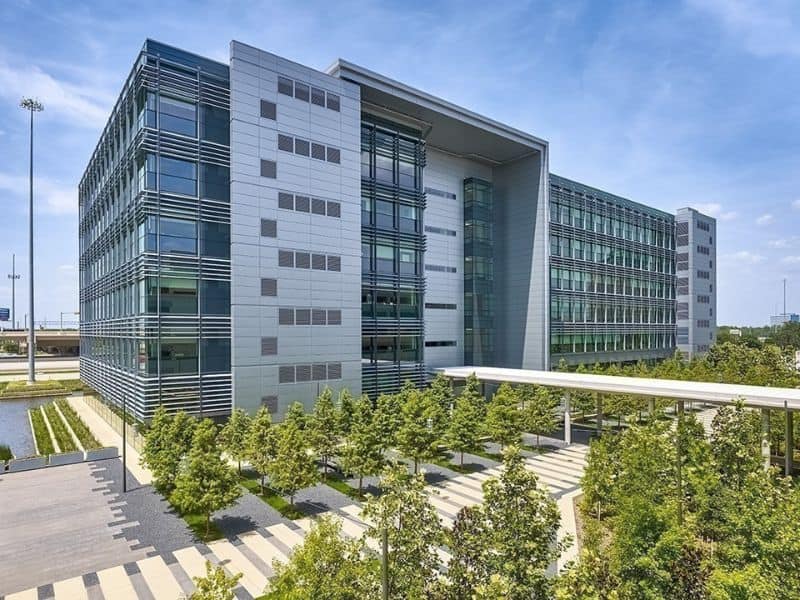
BP’s Helios Plaza is a testament to sustainable building design. It showcases the potential of recycled, rapidly renewable, and locally-produced materials. The design of this facility is innovative, featuring an on-site CHP system that guarantees reliability, energy efficiency, and reduced emissions.
As Houston’s first LEED Platinum-certified new construction building, Helios Plaza sets a high bar in sustainable architecture. It reflects BP’s environmental responsibility and commitment to fostering sustainable practices in the corporate world.
14. alliantgroup
Building Type: Corporate Structure
Location: Houston, Texas
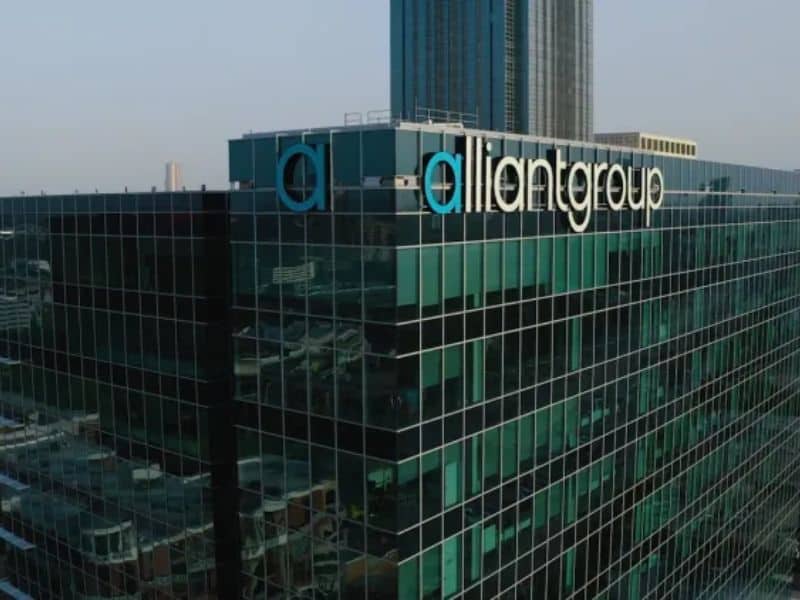
In the vibrant heart of Houston, Texas, stands alliantgroup’s corporate building. It’s a shining example of sustainable architecture. This remarkable structure in the Galleria area has earned the prestigious LEED Platinum certification.
With floor-to-ceiling windows specially coated to maintain optimum indoor temperature, the building welcomes abundant natural light.
alliantgroup’s headquarters exemplify green building practices. They also serve as a testament to the company’s mission of assisting small and mid-sized businesses. This forward-thinking design shows the pivotal role that sustainable buildings can play.
15. NASA Building 20
Building Type: Corporate Structure
Location: Houston, Texas
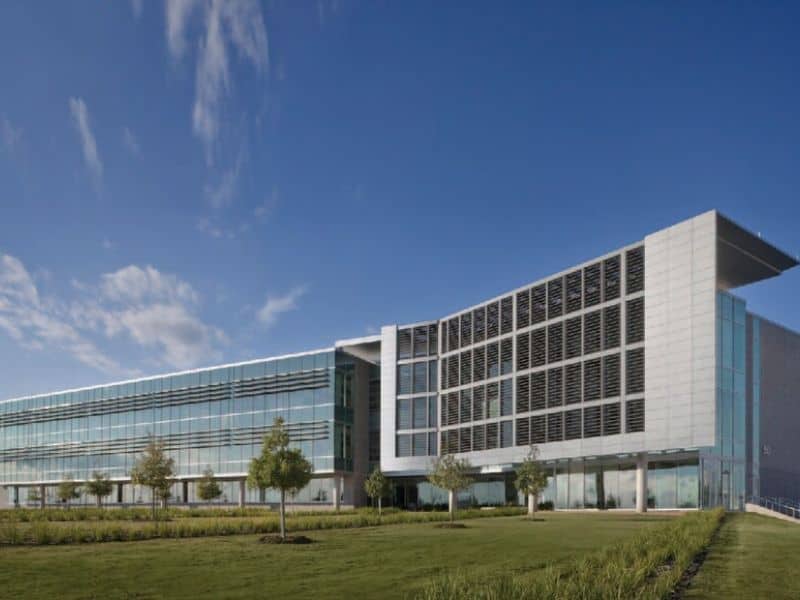
Situated in Houston, Texas, the NASA Building 20 is a benchmark in sustainable architecture. It has LEED Platinum certification, surpassing many office structures in sustainability. The three-story building showcases the innovative use of sustainable technologies and clever design strategies.
Some notable features are:
- Its unique orientation maximizes natural light, reducing the need for artificial lighting.
- The ventilation system adjusts air circulation based on occupancy for efficient energy use.
- The under-floor air system allows individuals to regulate their workspace airflow.
- To enhance HVAC efficiency, the building incorporates a total energy recovery wheel system that harnesses the heat energy from the outgoing air.
Building 20 demonstrates the possibility of creating a comfortable and efficient workspace while adhering to environmental standards.
16. Briarpark Green
Building Type: Corporate Structure
Location: Houston, Texas
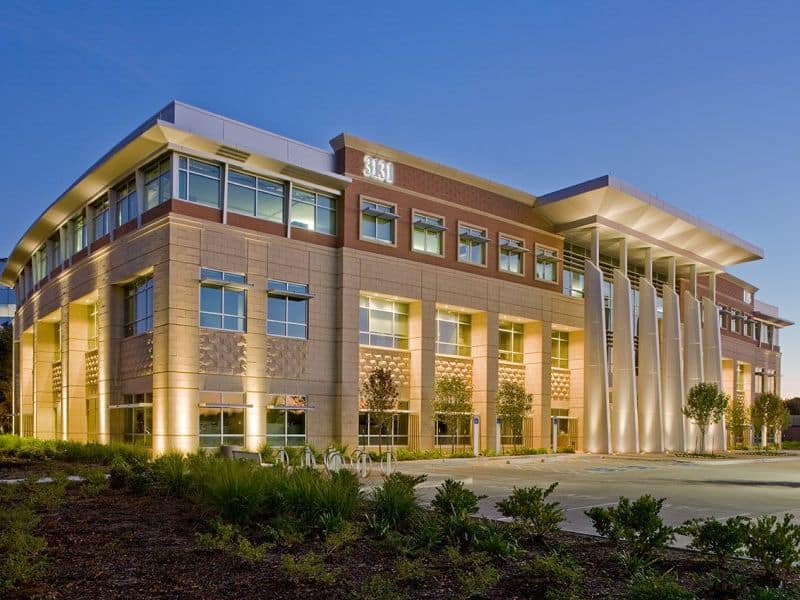
Briarpark proudly stands as Houston’s first LEED Platinum Class-A office building. It boasts a flexible and efficient layout that accommodates multiple tenants. The design seamlessly blends functionality with sustainability.
It offers technologically equipped training rooms, open-plan offices, a well-stocked resource library, and private offices enclosed in glass. The interior design showcases natural stones, sapele wood paneling, and high-quality light fixtures. This creates a harmonious fusion of aesthetics and functionality.
The building exceeds energy code requirements and achieves an impressive 25 percent energy and operational savings increase. It also extensively uses high-performance glass, wall and roof assemblies, and regionally-sourced materials with high-recycled content.
17. Trammell Crow Center
Building Type: Corporate Structure
Location: Dallas, Texas
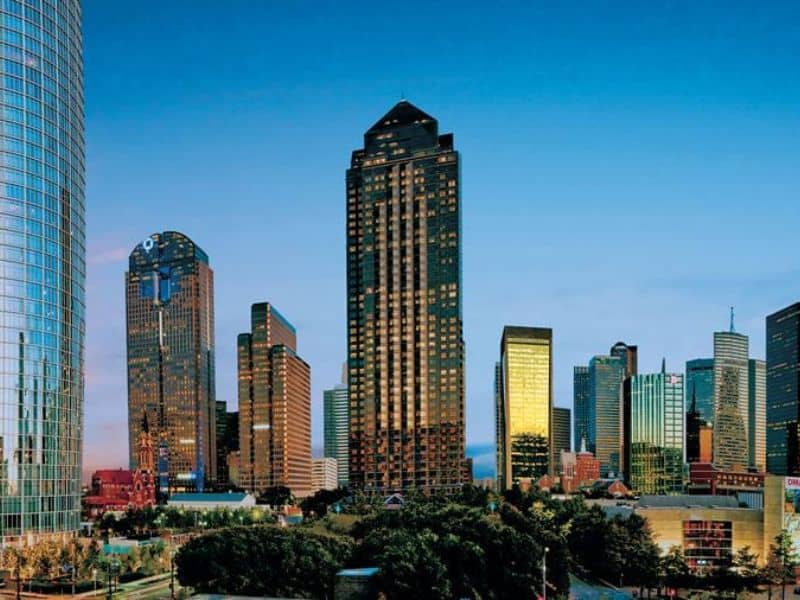
The Trammell Crow Center in Dallas, Texas, exemplifies a profound commitment to sustainable architecture, earning it a LEED Silver certification under the Existing Building category.
Crescent Real Estate Holdings LLC, the company managing the property, has implemented a series of eco-friendly renovations to advance its sustainability performance. Among these critical improvements is installing efficient, water-saving, low-flow toilets, which are projected to conserve over 3 million gallons of water annually.
This property is a testament to Crescent’s disciplined approach to sustainability, as it is the first in their portfolio to receive LEED certification.
Final Thoughts
The above examples showcase the importance of sustainable architecture in corporate structures.
When implemented correctly, these buildings can reduce energy consumption and emissions while providing comfortable working conditions for employees. They also reflect a firm’s commitment to environmental stewardship and responsibility.
Sustainable building design is quickly becoming the norm in many business sectors. The future of corporate architecture will continue to integrate green building practices and technologies.
The ultimate goal is to create workspaces promoting employee productivity and fostering environmental responsibility.







